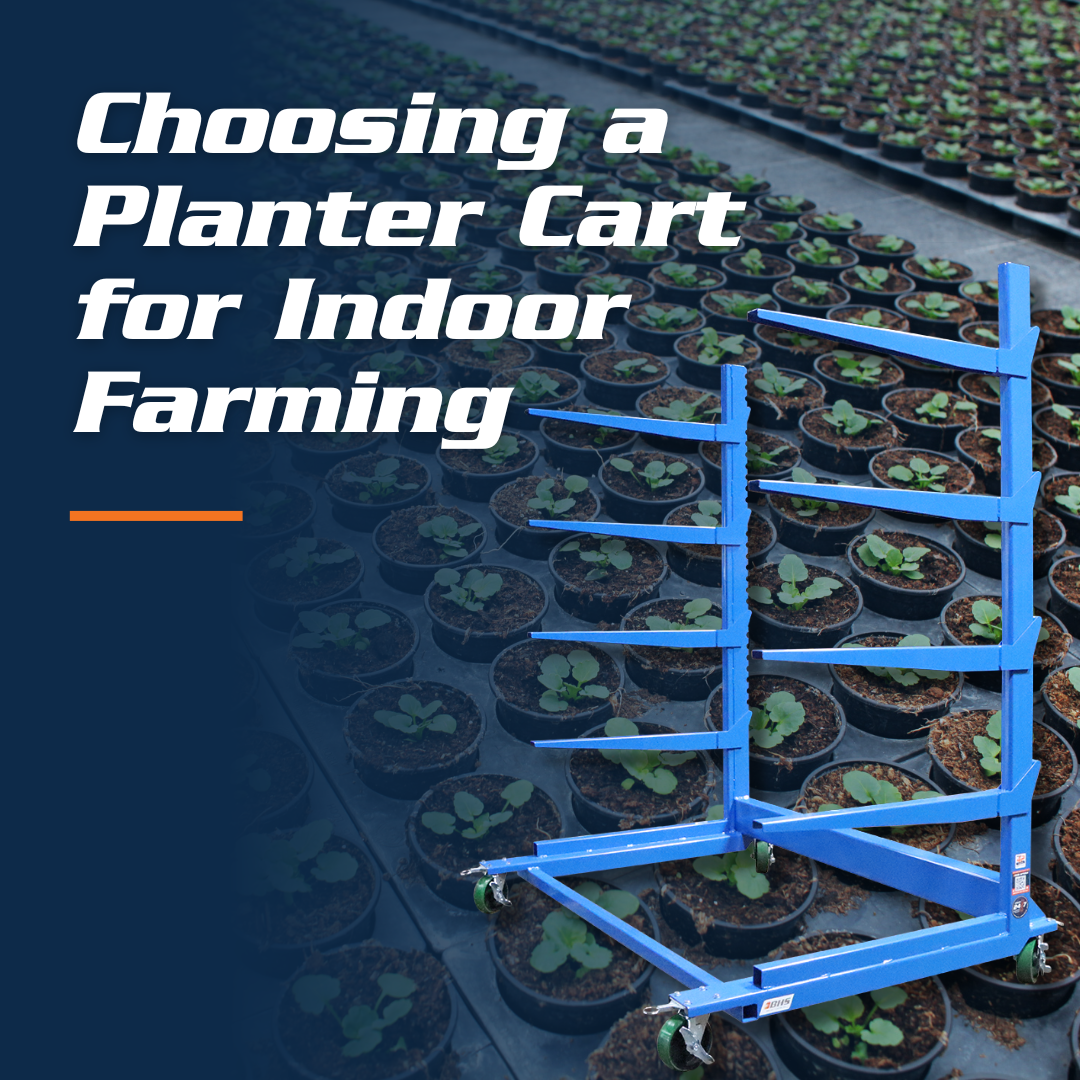We use cookies to make your experience better. To comply with the new e-Privacy directive, we need to ask for your consent to set the cookies. Learn more.
Choosing a Planter Cart for Indoor Farming
To keep up with global population growth, we’ll have to produce more food. Just how much more is debatable. The Food and Agriculture Organization of the United Nations (FAO) estimated that we must increase food production by 70 percent by 2050 to feed the world’s population; the FAO later revised that figure to 60 percent. Meanwhile, an influential 2011 study by Tilman et al. estimated that we’d need to produce between 100 and 110 percent more food by 2050 to keep up with demand.

A more recent meta-analysis estimates that global food demand will increase by 51 percent by 2050. Regardless of which statistics you believe, however, all the experts seem to agree that food demand is on the rise—and it’s up to plant agriculture to boost output.
The task won’t be easy in an era of increasing droughts and heat waves. For the solution, many innovative farmers are side-stepping the whims of nature by growing crops indoors, sometimes in the hearts of cities, embedded in the population centers that drive growing demand. Indoor farming is a promising response to the hunger challenges of our time—and tomorrow’s.
Applying the Lessons of Smart Manufacturing to Indoor Farming
Indoor agriculture isn’t a new phenomenon. Greenhouses and grow rooms are nearly as old as farming itself. But new technologies and approaches to indoor farming are fueling strong expansion in the sector, with some research forecasting the industry’s compound annual growth rate (CAGR) at over 8 percent through 2027.
If you’re part of this agricultural revolution—working with vertical farming, hydroponics systems, controlled environment agriculture (CEA), or even newer strategies—you know how important facility layout can be for the overall efficiency of your operation. But many indoor farmers fail to address another key driver of workplace safety and better productivity: material handling.
Take a lesson from the manufacturing and warehousing industries, with which indoor farming have more in common than you might think. Invest in better material handling systems to reduce workplace injuries, improve throughput, and create a more efficient facility, from seed to plate. That could encompass everything from automated racking to vast conveyor systems—but to get immediate results without a huge investment, start with the low-hanging fruit: creating a better material handling system for planters. Start with a fleet of specialized planter carts.
Choosing a Planter Cart for Your Indoor Farming Facility
Carts are the workhorses of any material handling system, improving ergonomics for users while allowing a single employee to move materials at scale. Planters are a perfect example of an agricultural material that requires equipment for safe, efficient movement. They’re large, heavy, and generally unwieldy.
A planter cart is a rolling rack built for plant trays. This cart will generally consist of multiple trays, a push bar, and wheels to move the whole assembly throughout your facility. But while any planter cart is better than none, it’s worth taking the time to choose a design that matches your operation. Look for the following features to get the most benefit from your planter carts:
- Appropriate capacity. Weigh your fully loaded planters. Estimate how many planters you need to move in a single trip. Then look for a cart with a capacity that can handle the load—which can sometimes add up to hundreds of pounds per planter.
- Flexible configuration. Plant height changes over time, of course, so it’s helpful to choose a cart with adjustable shelving. That will allow you to quickly reconfigure your tool to accommodate planters regardless of growing stage, without risking damage to your crops.
- Forklift and pallet-jack compatibility. Indoor farms are industrial facilities, and many use material handling equipment like forklifts and pallet jacks to move particularly heavy loads. Choose a planter cart with integrated fork pockets so you can move it manually or via lift truck.
- Smart caster layout. Rigid casters can make it hard to make tight turns. Choose a cart with at least two swivel casters, and make sure the wheels won’t damage your floors. Phenolic swivel casters are a good choice. Also choose carts with lockable casters to make sure your cart won’t move while you load it.
- Heavy duty construction. Many industrial carts won’t stand up to the rigors of agriculture. Water leads to rust, fertilizers cause damage, or a thin frame buckles under load. Choose a welded steel cart with a water-resistant, chemical-resistant powder coating.
Where can you find a planter cart that meets all these specifications? Try the Cantilever Cart (CCA) from BHS, Inc. This heavy duty industrial cart features removable cantilever arms, adjustable vertically in two-inch increments. Each shelf supports up to 250 pounds, with a total unit capacity of 2,500 pounds. And standard shelf arms stretch a full 39 inches, ideal for the most common industrial planters on the market. Stationary and custom models are available to meet your unique specifications, too.
To learn more about planter carts and other material handling solutions for indoor agriculture, contact BHS, Inc. at 1.800.BHS.9500.
